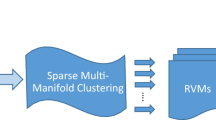Abstract
A modified framework, that applies temporal association rule mining to financial time series, is proposed in this paper. The top four components stocks of Dow Jones Industrial Average (DJIA) in terms of highest daily volume and DJIA (index time series, expressed in points) are used to form the time-series database (TSDB) from 1994 to 2007. The main goal is to generate profitable trades by uncovering hidden knowledge from the TSDB. This hidden knowledge refers to temporal association rules, which represent the repeated relationships between events of the financial time series with time-parameter constraints: sliding time windows. Following an approach similar to Knowledge Discovery in Databases (KDD), the basic idea is to use frequent events to discover significant rules. Then, we propose the Multi-level Intensive Subset Learning (MIST) algorithm and use it to unveil the finer rules within the subset of the corresponding significant rules. Hypothesis testing is later applied to remove rules that are deemed to occur by chance.
Access this chapter
Tax calculation will be finalised at checkout
Purchases are for personal use only
Similar content being viewed by others
References
Malkiel, B.G.: The efficient market hypothesis and its critics. J. Econ. Perspect. 17, 59–82 (2003)
Dante, C., Francisco, J.M.D.P., Alpha, P.: Finding temporal associative rules in financial time-series: a case of study in madrid stock exchange (IGBM). Adv. Comput. Intell. Man-Mach. Syst. Cybern 1, 60–68 (2010)
Warasup, K., Nukoolkit, C.: Discovery association rules in time series data. 29(4), 447–462 (2012)
Lin, J., et al.: A symbolic representation of time series, with implications for streaming algorithms. In: Proceedings of the 8th ACM SIGMOD Workshop on Research Issues in Data Mining and Knowledge Discovery. ACM (2003)
Lkhagva, B., Yu, S., Kyoji, K.: Extended sax: extension of symbolic aggregate approximation for financial time series data representation. DEWS2006 4A-i8 7 (2006)
Harms, S.K., Deogun, J.S., Tadesse, T.: Discovering sequential association rules with constraints and time lags in multiple sequences. In: Hacid, M.-S., Raś, Z.W., Zighed, D.A., Kodratoff, Y. (eds.) ISMIS 2002. LNCS (LNAI), vol. 2366, pp. 432–441. Springer, Heidelberg (2002)
http://www.investopedia.com/terms/c/central_limit_theorem.asp
Acknowledgments
This research is funded by the Republic of Singapore’s National Research Foundation through the grant “NRF2013EWT-EIRP001-025” under Energy Innovation Research Program and by the Republic of Singapore’s National Research Foundation through the grant “NRF2013EWTEIRP001-025” under Energy Innovation Research Programme and a grant to the Berkeley Education Alliance for Research in Singapore (BEARS) for the Singapore-Berkeley Building Efficiency and Sustainability in the Tropics (SinBerBEST) Program. BEARS has been established by the University of California, Berkeley as a center for intellectual excellence in research and education in Singapore.
Author information
Authors and Affiliations
Corresponding author
Editor information
Editors and Affiliations
Rights and permissions
Copyright information
© 2015 Springer International Publishing Switzerland
About this paper
Cite this paper
Tan, TF., Wang, QG., Phang, TH., Li, X., Huang, J., Zhang, D. (2015). Temporal Association Rule Mining. In: He, X., et al. Intelligence Science and Big Data Engineering. Big Data and Machine Learning Techniques. IScIDE 2015. Lecture Notes in Computer Science(), vol 9243. Springer, Cham. https://doi.org/10.1007/978-3-319-23862-3_24
Download citation
DOI: https://doi.org/10.1007/978-3-319-23862-3_24
Published:
Publisher Name: Springer, Cham
Print ISBN: 978-3-319-23861-6
Online ISBN: 978-3-319-23862-3
eBook Packages: Computer ScienceComputer Science (R0)




